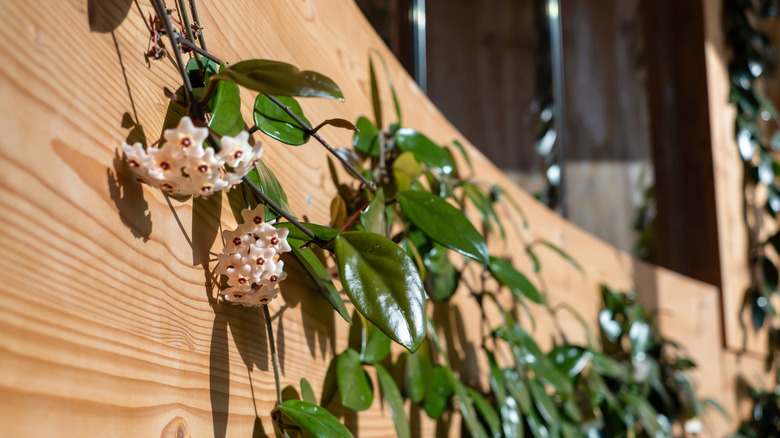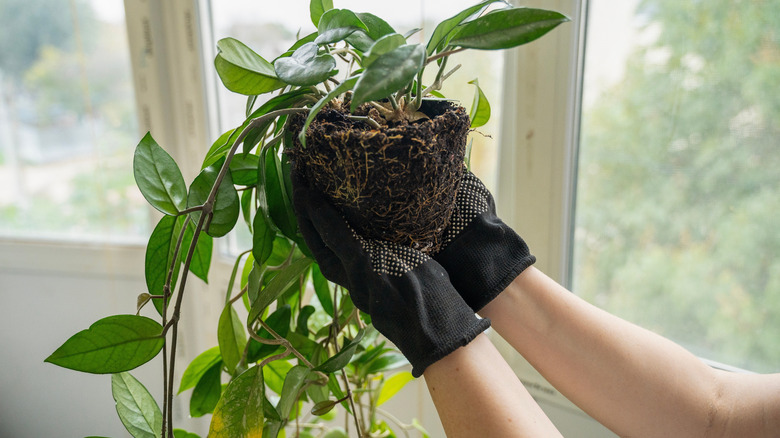How To Know When To Repot Your Hoya Plant (& Mistakes To Avoid)
Once you find out how easy hoyas are to grow and how exciting it is to watch their clustered flowers form, you're sure to become addicted to these coveted houseplants. In fact, hoyas are one of those underrated houseplants you should keep an eye out for. There are close to 300 different species of hoyas, and you'll even find online nurseries that specialize in these plants. With all these choices, you could be tempted to become a collector, but if you do, you'll want to know when you should repot your hoya plants as well as any mistakes to avoid. Signs your hoyas need repotting include roots that are trying to escape through the drainage holes, slower growth, and the soil dries out quickly. The most common mistake to avoid is repotting at the incorrect time. As a general rule, these plants do prefer to be just slightly root-bound, so they should only need repotting every two or three years and only when necessary.
Many hoya species are vining plants that produce long tendrils that can easily twine around climbing structures or cascade down from a hanging basket. They have thick, fleshy leaves that feel quite waxy, hence their common name of wax plant or wax flower. There are also rarer bush-type hoyas, such as Hoya multiflora, with large clusters of white and yellow flowers that look like shooting stars. If that's not enough incentive to embrace hoyas, you'll find they're one of a few different houseplants that will make your home smell amazing.
Signs your hoya plant needs repotting
Hoyas will only need repotting when they've outgrown their current pot. If you notice the roots trying to escape through the drainage holes in the base, it means they have nowhere else to go. Plus, when the soil dries out quickly, it generally means the roots are immediately soaking up all the water, and there's just not enough moisture to satisfy them. In their native habitat, hoyas are mostly epiphytic, which means that they use other plants for support while their roots gather water from the surrounding air and nutrients from plant debris. Additionally, if you notice that your plants are not putting on much growth, it probably means they're ready for a slightly larger home to allow for more root development.
If you're not sure, you can just gently take the plant out of the pot and examine the roots. If they're tightly bound, then it's time to move them to a slightly bigger container. When repotting your hoya, choose a pot that's only around 2 inches larger, meaning the transition from a 4-inch to a 6-inch pot, but don't be tempted to upsize further. You'll find that these plants bloom best when they're slightly pot-bound. You also want to avoid the mistake of repotting your hoya while it's producing buds or in bloom. Therefore, the best time to repot these gorgeous plants is in spring or early summer before the flowering buds appear. If you follow these tips, you'll be delighted to know that hoyas are houseplants with abnormally long lives.

